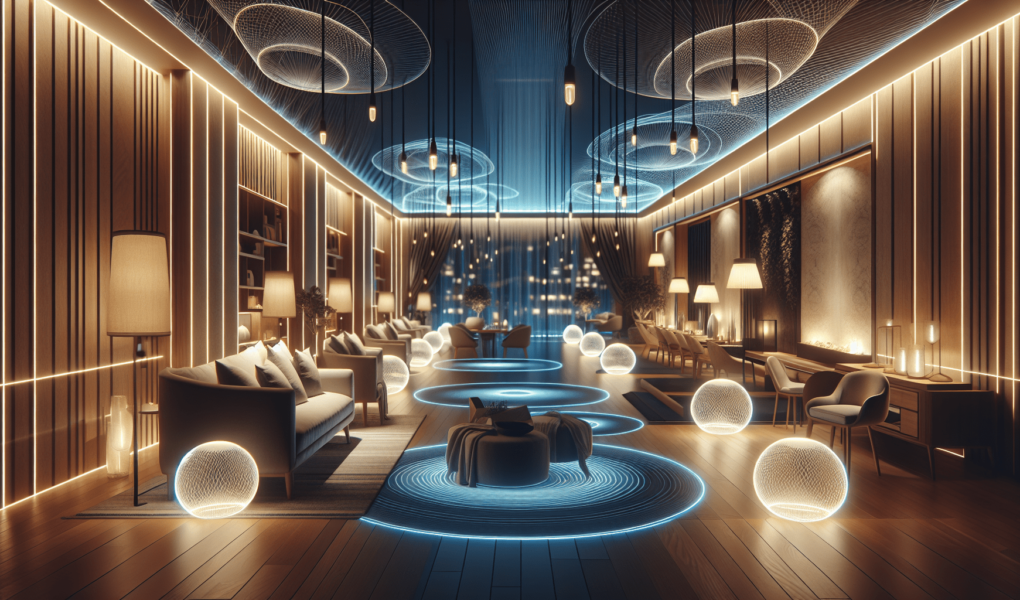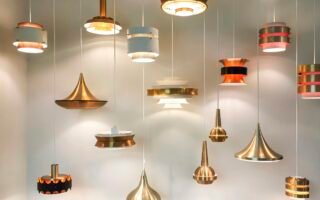Imagine walking into a luxurious hotel lobby, where the warm glow of strategically placed lights instantly creates an inviting ambiance. In today’s competitive hospitality industry, the guest experience is paramount, and every element, down to the lighting, plays a significant role in creating a memorable stay. From the subtle illumination in a guest room to the dramatic lighting in a restaurant, the art of hospitality lighting design sets the stage for unparalleled comfort and enchantment. In this article, we will explore the importance of hospitality lighting design and how it contributes to enhancing the overall guest experience.
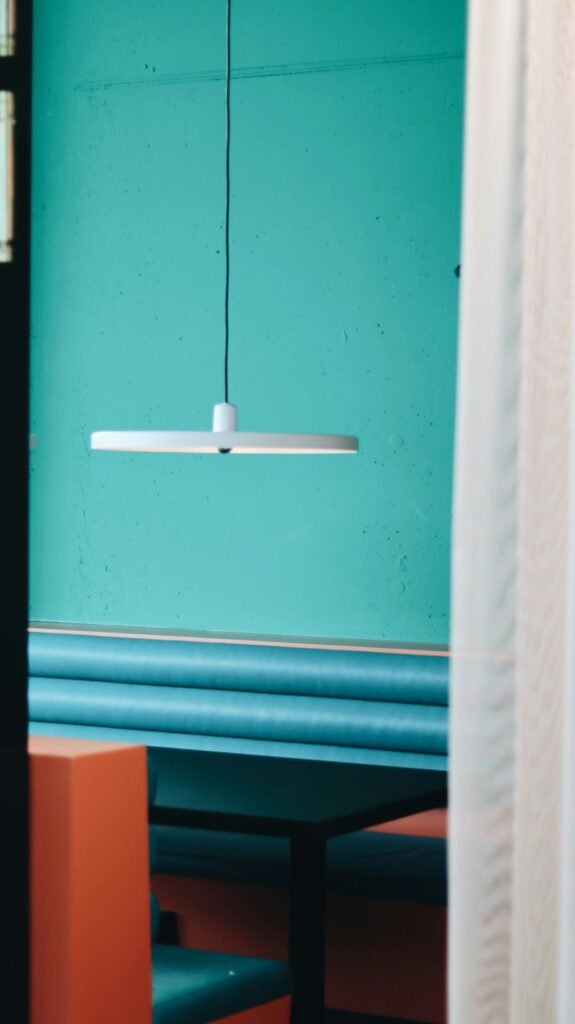
Importance of Hospitality Lighting Design
When it comes to creating a welcoming and memorable guest experience, hospitality lighting design plays a crucial role. It goes beyond simply providing illumination and contributes to the overall ambiance of a space, boosts branding and identity, and improves guest satisfaction.
Enhances Overall Ambiance
The lighting design in a hospitality setting can significantly influence the ambiance of the space. The type of lighting, its intensity, and placement can all work together to create a specific mood or atmosphere. Warm, soft lighting can evoke a cozy and intimate feel, while brighter, cooler lighting can create a vibrant and energetic ambiance. By carefully selecting and designing the lighting elements, hospitality venues can create an environment that aligns with their desired guest experience.
Creates a Welcoming Environment
First impressions matter, and a well-designed lighting scheme can go a long way in creating a welcoming environment for guests. Lighting can be strategically used to draw attention to entrances, reception areas, and other key points of interest, guiding guests through the space. By using warm and inviting lighting in these areas, guests will instantly feel at ease and comforted upon arrival. Additionally, proper lighting can help eliminate dark corners or shadowy spaces, ensuring guests feel safe and secure throughout their stay.
Boosts Branding and Identity
Lighting design plays a significant role in expressing a hospitality venue’s branding and identity. Whether it’s a sleek and modern hotel or a cozy bed and breakfast, the lighting design should reflect the overall aesthetic and concept of the establishment. Through the use of different lighting techniques, such as customized fixtures or unique lighting fixtures, a venue can reinforce its brand image and create a distinct identity. Consistency in the lighting design throughout the space will help reinforce the brand and leave a lasting impression on guests.
Improves Guest Satisfaction
Guest satisfaction is at the heart of the hospitality industry, and lighting can have a direct impact on how guests perceive and experience a venue. Proper lighting design can enhance comfort and relaxation, create memorable experiences, highlight architectural features and design elements, and foster emotional connections with guests. By considering the needs and preferences of guests, hospitality venues can create a lighting design that enhances their overall satisfaction and improves their overall experience.
Considerations for Effective Hospitality Lighting Design
Creating an effective hospitality lighting design requires careful consideration of various factors. From understanding the space and balancing functionality and aesthetics to complying with safety standards and maximizing energy efficiency, each aspect contributes to the overall success of the design.
Understanding the Space
Before designing the lighting scheme, it is essential to have a thorough understanding of the space. Consider the layout, dimensions, and purpose of each area within the venue. This knowledge will help determine the appropriate lighting fixtures, placement, and intensity required for each space. Understanding the specific requirements and limitations of the space will enable designers to create a lighting design that seamlessly integrates with the overall concept and enhances the guest experience.
Balancing Functionality and Aesthetics
Hospitality lighting design must strike a delicate balance between functionality and aesthetics. While providing adequate illumination is crucial, the design should also contribute to the overall visual appeal of the space. The lighting fixtures should complement the interior design concept, enhancing the ambiance and atmosphere without compromising on practicality. By considering both these aspects, the lighting design can seamlessly integrate into the overall guest experience.
Considering Different Areas and Purposes
A hospitality venue comprises various areas, each serving a different purpose. From guest rooms and dining areas to lobbies and outdoor spaces, each area requires a tailored lighting approach to meet its specific needs. Task lighting, such as reading lights or work area lighting, may be necessary in guest rooms, while accent lighting could be used to highlight artwork or architectural features in public areas. By considering the different uses and requirements of each space, the lighting design can effectively meet the needs of both guests and staff.
Complying with Safety Standards
Safety should be a top priority when designing lighting in any hospitality setting. Compliance with safety standards ensures that guests are protected from potential hazards and minimizes the risk of accidents. Adequate lighting in hallways, staircases, and other common areas is essential to prevent slips, trips, and falls. Emergency lighting and exit signs should also be incorporated to guide guests to safety in case of a power outage or evacuation. By adhering to safety standards, hospitality venues can provide a secure environment for their guests.
Maximizing Energy Efficiency
Energy efficiency is not only environmentally responsible but also economically beneficial for hospitality venues. Implementing energy-efficient lighting solutions can result in significant cost savings in the long run. LED lighting, for example, consumes less energy compared to traditional incandescent bulbs and has a longer lifespan. Incorporating sensors and dimmers can further optimize energy usage by automatically adjusting lighting levels based on occupancy or natural light availability. By maximizing energy efficiency, hospitality venues can reduce their environmental footprint and save on operational costs.
Incorporating Sustainable Design Principles
In today’s environmentally conscious world, sustainable design is a crucial consideration for all industries, including hospitality lighting design. By incorporating sustainable design principles, lighting designers can minimize waste, reduce energy consumption, and choose environmentally friendly materials. This could include using recycled or recyclable lighting fixtures, opting for low-emission lighting sources, and integrating daylighting strategies to reduce reliance on artificial lighting. Sustainability not only benefits the environment but also enhances a venue’s reputation and appeal to eco-conscious guests.
Types of Lighting in Hospitality Design
An effective hospitality lighting design incorporates various types of lighting to create a dynamic and visually appealing space. Each type serves a different purpose and contributes to the overall design.
General or Ambient Lighting
General or ambient lighting provides the overall illumination of a space and ensures there is a base level of lighting for visibility. It serves as the foundation of the lighting design and is typically achieved through overhead fixtures, such as chandeliers, recessed lighting, or pendant lights. General lighting sets the mood of the space and provides a comfortable level of brightness throughout.
Task Lighting
Task lighting is specifically designed to illuminate specific areas where tasks or activities are performed. Examples include bedside reading lamps, desk lamps, or vanity lights in bathrooms. Task lighting allows guests to perform activities comfortably and without eye strain. It is important to ensure that task lighting is adjustable to suit individual preferences and needs.
Accent Lighting
Accent lighting is used to draw attention to specific architectural features, artwork, or decorative elements within a space. It adds visual interest and creates focal points, enhancing the overall design aesthetic. Wall sconces, track lighting, or picture lights are common fixtures used for accent lighting.
Decorative Lighting
Decorative lighting goes beyond purely functional purposes and serves as a design element in itself. It includes statement lighting fixtures, such as chandeliers or elaborate pendant lights, that become a focal point within a space. Decorative lighting adds personality and elegance to the overall design concept.
Natural Lighting
Natural lighting refers to the use of daylight to illuminate a space. It has numerous benefits, including enhancing the connection between indoor and outdoor spaces, providing a sense of openness, and reducing reliance on artificial lighting. Design strategies such as strategically placed windows, skylights, or light shelves can optimize the use of natural light.
The Role of Color Temperature in Hospitality Lighting
Color temperature refers to the warmth or coolness of light, measured in Kelvin (K). Understanding and utilizing different color temperatures can significantly impact the mood, atmosphere, and overall aesthetic of a hospitality space.
Warm vs Cool Tones
Warm-toned lighting, usually ranging from 2000K to 3000K, creates a cozy and intimate feel. It emits a soft, golden glow that evokes a sense of relaxation and comfort. Warm lighting is commonly used in guest rooms, lobbies, and restaurants to create a welcoming ambiance.
Cool-toned lighting, on the other hand, falls within the range of 4000K to 6000K. It emits a brighter, bluish-white light and is often associated with a more energetic and vibrant atmosphere. Cool lighting is commonly used in spaces where focus and alertness are required, such as conference rooms or gym facilities.
Impact on Mood and Atmosphere
The color temperature of lighting can have a significant impact on the mood and atmosphere of a hospitality venue. Warm lighting creates a sense of coziness and relaxation, making it ideal for areas where guests are meant to unwind and feel at ease. Cool lighting, on the other hand, promotes alertness and activity and is suitable for areas where guests need to be more energized.
By strategically incorporating warm and cool lighting in different areas of a hospitality space, designers can create a multi-dimensional environment that caters to varying guest needs and preferences.
Using Color Temperature to Highlight Key Features
Color temperature can also be used effectively to highlight key features and design elements within a space. By selecting lighting with a contrasting color temperature to the ambient lighting, specific areas or objects can be visually emphasized. For example, in a restaurant, warm lighting may be used for general ambiance, while cool-toned accent lighting draws attention to the bar area or artwork on the walls.
By using color temperature as a design tool, lighting designers can guide guests’ attention to specific areas, enhancing the overall visual experience and creating focal points within a space.
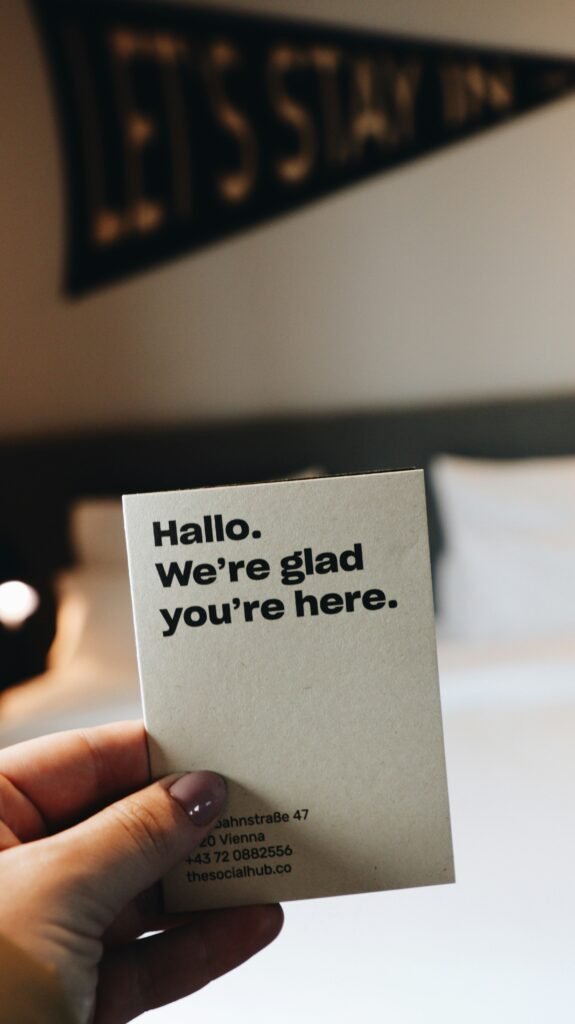
Smart Lighting Solutions for Hospitality
Advancements in technology have revolutionized the way lighting is controlled and managed in hospitality venues. Smart lighting solutions offer numerous benefits in terms of convenience, flexibility, and energy efficiency.
Automated Lighting Control Systems
Automated lighting control systems allow for the centralized management of lighting throughout a hospitality venue. These systems can be programmed to adjust lighting levels based on occupancy sensors, time of day, or natural light availability. Automated lighting control systems not only enhance the guest experience by providing seamless lighting transitions but also optimize energy efficiency by minimizing energy wastage.
Wireless Lighting Controls
Wireless lighting controls offer flexibility and convenience in the management of hospitality lighting. Instead of relying on traditional wired systems, wireless controls use radio frequency or Bluetooth technology to connect lighting fixtures to a central control panel. This enables easy customization of lighting scenes, dimming levels, or color temperature settings without the need for extensive rewiring.
Customizable Lighting Scenes
With smart lighting solutions, hospitality venues can easily create customizable lighting scenes to suit different occasions or atmospheres. Whether it’s a romantic dinner setting, a lively event, or a relaxed ambiance, lighting scenes can be pre-programmed and activated with a single touch. This flexibility allows venues to cater to varying guest preferences and enhance the overall experience.
Integration with Smart Home Technology
Integration with smart home technology offers guests a seamless and personalized lighting experience. By connecting lighting systems to smart home platforms, guests can control lighting levels, colors, or scenes using their smartphones or voice commands. This integration enhances guest comfort, allowing them to create a personalized environment that aligns with their preferences.
Impact of Lighting on Guest Experience
Hospitality lighting design has a profound impact on how guests perceive and interact with a venue. It goes beyond mere functionality and contributes to enhancing comfort, creating memorable experiences, highlighting design elements, and fostering emotional connections.
Enhancing Comfort and Relaxation
Proper lighting design can greatly enhance guest comfort and relaxation. Soft, warm lighting in guest rooms and public spaces creates a cozy and inviting atmosphere, helping guests unwind and feel at ease. By carefully considering lighting levels and color temperatures, designers can evoke a sense of calm and tranquility, allowing guests to enjoy a comfortable stay.
Creating Memorable Experiences
Lighting can play a crucial role in creating memorable experiences for guests. Whether it’s through dynamic lighting displays, interactive elements, or unique lighting fixtures, an innovative lighting design can leave a lasting impression. From illuminated walkways and breathtaking light shows to artistic lighting installations, the possibilities are endless when it comes to creating unforgettable moments that guests will cherish.
Highlighting Architectural Features and Design Elements
Hospitality venues often feature unique architectural features and design elements that deserve to be highlighted. Lighting design can be utilized to draw attention to these features, creating a visually stunning environment. By strategically placing accent lighting or employing creative lighting techniques, such as grazing or wall washing, designers can make these elements stand out and become focal points of the space.
Fostering Emotional Connections
Lighting has the potential to evoke emotions and create a sense of connection with guests. Warm and inviting lighting can make guests feel welcome and appreciated, fostering a positive emotional connection with the venue. Additionally, creative lighting installations or plays of light and shadow can evoke awe, fascination, or a sense of wonder, further enhancing the emotional impact on guests.
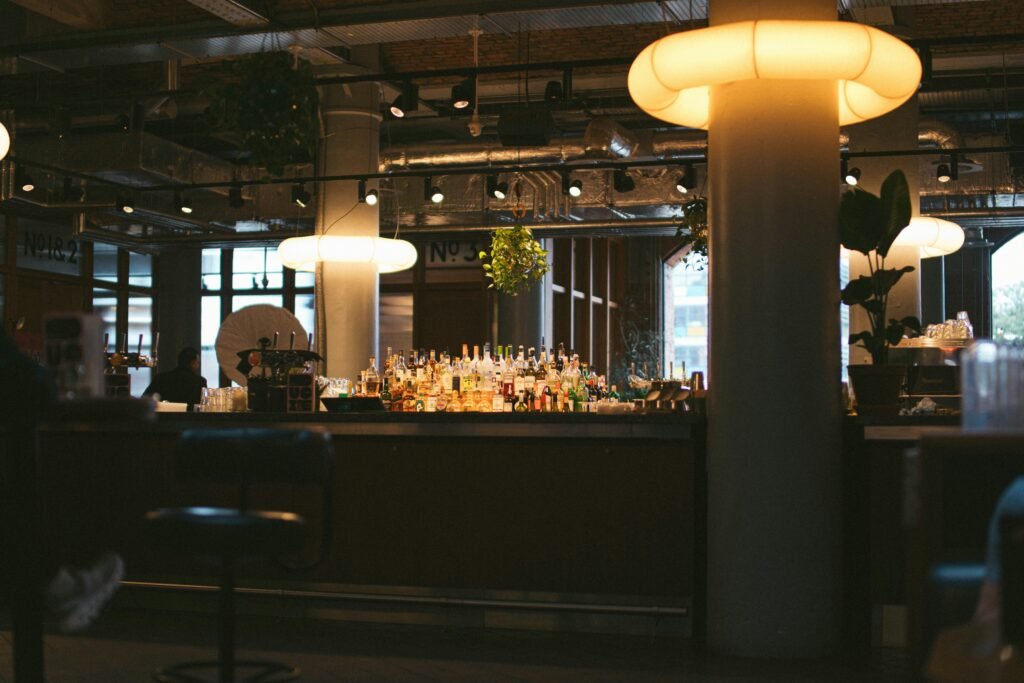
Case Studies: Successful Hospitality Lighting Design Implementation
Real-life examples of successful hospitality lighting design can provide inspiration and insight into how lighting can transform a space and enhance the guest experience. Here are a few notable case studies:
Luxury Hotel Chain X: Transforming Guest Rooms with Innovative Lighting
Luxury Hotel Chain X revamped their guest rooms with innovative lighting solutions. By incorporating customizable lighting scenes and automated controls, guests can easily adjust the lighting levels and color temperatures to suit their preferences. This level of flexibility allows guests to create a personalized ambiance that reflects their mood, enhancing their overall comfort and satisfaction.
High-end Restaurant Y: Creating an Intimate Dining Experience through Lighting
High-end Restaurant Y used lighting design to create an intimate and romantic dining experience. Soft, warm lighting was used in the dining area, providing a cozy atmosphere for guests. Accent lighting was strategically placed to highlight the exquisite tabletop arrangements and beautiful artwork on the walls, adding a touch of elegance to the space. The lighting design complemented the overall interior design concept and contributed to the restaurant’s reputation as a sophisticated dining destination.
Resort Z: Utilizing Outdoor Lighting for a Magical Resort Atmosphere
Resort Z transformed its outdoor spaces into a magical oasis through innovative outdoor lighting. Carefully positioned landscape lighting illuminated the lush gardens, swimming pools, and pathways, creating an enchanting ambiance after sunset. By integrating smart lighting controls, the resort can easily adjust the lighting scenes for different events or occasions, providing a seamless and immersive experience for guests.
Latest Trends in Hospitality Lighting Design
Hospitality lighting design continues to evolve, with new trends emerging to meet the changing demands and preferences of guests. Keeping up with these trends ensures that hospitality venues remain current and appealing. Here are some of the latest trends in hospitality lighting design:
Integration of LED Technology
LED lighting has become a standard in the hospitality industry due to its energy efficiency, long lifespan, and versatility. The integration of LED technology allows for innovative lighting designs, such as color-changing fixtures, dynamic lighting displays, and enhanced control options. LED lighting also offers the flexibility to adjust color temperatures, providing different lighting scenarios to suit various guest needs.
Emphasis on Customization and Personalization
Personalization is a growing trend in the hospitality industry, and lighting design is no exception. Guests now expect lighting options that can be tailored to their preferences and moods. Dimming capabilities, adjustable color temperatures, and customizable lighting scenes enable guests to create a personalized environment that suits their needs. This customization enhances the overall guest experience and instills a sense of control and comfort.
Incorporation of Natural Elements
The integration of natural elements in lighting design has gained popularity in recent years. From incorporating daylighting strategies to simulate natural light patterns, to incorporating organic shapes and materials in lighting fixtures, the aim is to bring the outdoors inside. This trend creates a connection with nature, enhances well-being, and contributes to a more sustainable and eco-friendly design.
Dynamic and Interactive Lighting
Dynamic and interactive lighting adds an element of surprise and excitement to the guest experience. Using advanced control systems, lighting designers can create lighting displays that change color, intensity, or pattern based on specific events or interactions. This dynamic lighting design adds a sense of liveliness and entertainment, enhancing the overall guest experience and creating unforgettable moments.
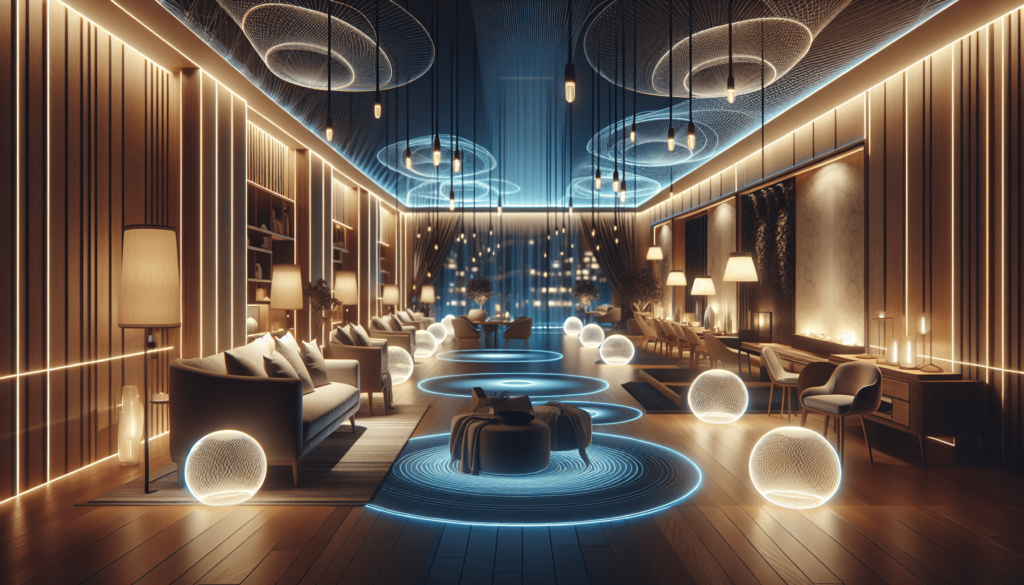
Collaboration between Lighting Designers and Interior Designers
Collaboration between lighting designers and interior designers is crucial for creating a cohesive and impactful guest experience. By aligning their visions and expertise, they can ensure that the lighting design seamlessly integrates with the overall interior design concept.
Aligning Lighting Design with Interior Design Concept
Lighting designers collaborate closely with interior designers to understand the overall concept and aesthetic of a hospitality venue. By aligning the lighting design with the interior design elements, such as materials, colors, and textures, they can create a unified and harmonious space. This collaboration allows for a holistic design approach that considers both functionality and aesthetics.
Balancing Individual Roles for a Cohesive Guest Experience
While collaboration is important, it is also essential for lighting designers and interior designers to balance their individual roles. Each discipline brings its own expertise and perspective to the table, and both should have the opportunity to contribute their unique insights. By effectively communicating and compromising, the lighting design and interior design can work together harmoniously to create a cohesive and positive guest experience.
Conclusion
In summary, hospitality lighting design plays a vital role in enhancing the guest experience. Through careful consideration of lighting types, color temperature, and smart lighting solutions, hospitality venues can create a welcoming and memorable environment. By collaborating with interior designers and staying up-to-date with the latest trends and technologies, lighting designers can continuously innovate and adapt to meet the changing needs and preferences of guests. The importance of hospitality lighting design in guest satisfaction cannot be underestimated, and its continuous evolution will drive the industry forward.
